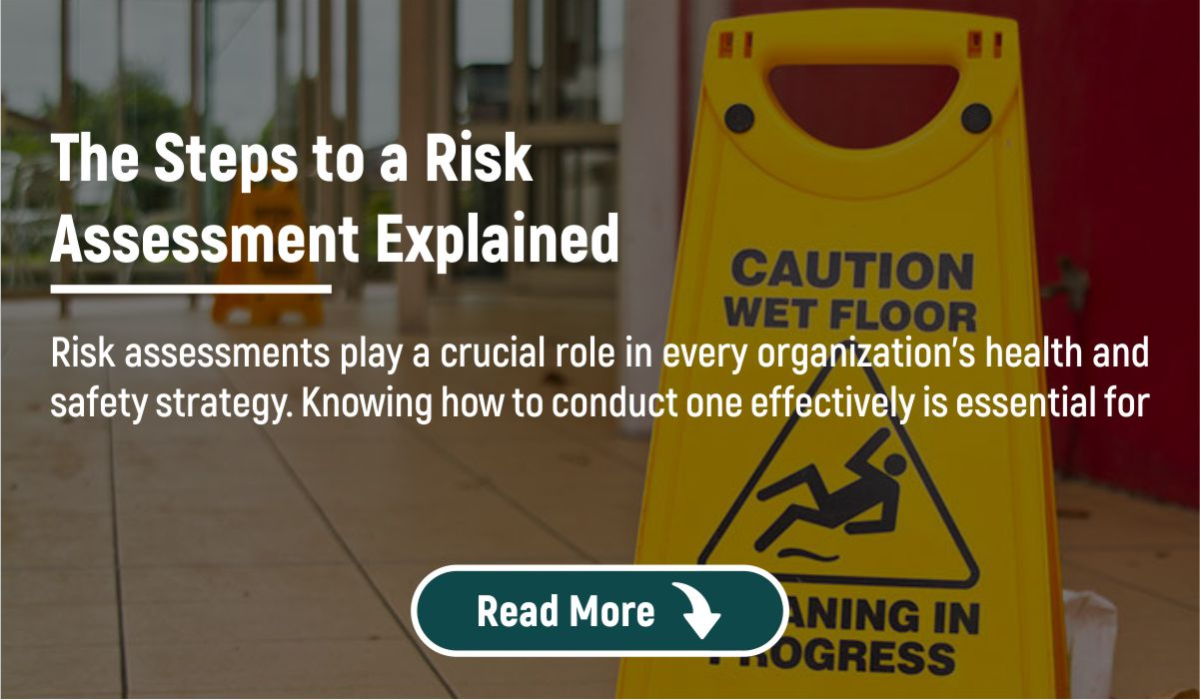
The Steps to a Risk Assessment Explained
Risk assessments play a crucial role in every organization's health and safety strategy. Knowing how to conduct one effectively is essential for individuals with health and safety management responsibilities. Therefore, many health and safety courses and qualifications, such as IOSH Managing Safely and the NEBOSH National General Certificate, cover the process of conducting an effective risk assessment. In this post, we'll explore the five steps to conducting an effective risk assessment so that you can implement them in your workplace and create a safer environment for yourself and your colleagues.
What is a Risk Assessment?
A risk assessment is a practical exercise consisting of five steps in which the assessor identifies hazards in the workplace. Hazards can be anything that has the potential to cause harm, from broken shards of glass to misplaced brooms. The level of harm a hazard could cause and the likelihood of that harm occurring combine to determine the risk it poses to individuals in the workplace.
Risk assessments are integral to an organization's health and safety strategy because they identify hazards that may otherwise go unnoticed. This provides an opportunity to implement control measures that reduce the risk these hazards pose and ensure the safety of workers.
How to Conduct a Health and Safety Risk Assessment
The five steps of a risk assessment are as follows:
Step 1: Identify Hazards
The first step in a risk assessment is to identify potential hazards or dangers present in a specific situation or environment. Hazards can vary widely, from dangerous machinery to spilled chemicals. It's essential for the risk assessor to remain vigilant during the assessment and consider how each hazard could pose a risk to individuals in the workplace.
Step 2: Assess the Risks
The second step involves determining the level of risk posed by the identified hazards. This requires assessing both the severity of the harm the hazard could cause and the likelihood of that harm occurring. By multiplying these two factors, the assessor can calculate the risk level for each hazard and prioritize them accordingly.
Step 3: Implement Control Measures
Once the risks have been assessed, control measures can be implemented to mitigate them. These measures can include removing the hazard altogether, reducing exposure to the hazard, or providing personal protective equipment. The effectiveness of each control measure should be evaluated, and adjustments made as necessary.
Step 4: Monitor and Review
After implementing control measures, it's essential to monitor their effectiveness and review the risk assessment periodically. This ensures that the workplace remains safe and that any new hazards are identified and addressed promptly.
Step 5: Communicate and Document
Finally, the findings of the risk assessment should be communicated to relevant stakeholders, and records should be kept for future reference. This promotes transparency and accountability and ensures that safety measures are consistently maintained.
By following these steps, organizations can conduct effective risk assessments, identify hazards, and reduce the risk they pose to workers. Training courses such as IOSH Managing Safely and the NEBOSH General Certificate cover these steps in their curricula and provide valuable knowledge and skills for individuals responsible for health and safety in the workplace. If you have any questions about risk assessments or our courses, please don't hesitate to contact us.
